Description
#1 New York Times bestseller “Essential reading for anyone interested in understanding and treating traumatic stress and the scope of its impact on society.” —Alexander McFarlane, Director of the Centre for Traumatic Stress Studies A pioneering researcher transforms our understanding of trauma and offers a bold new paradigm for healing in this New York Times bestseller Trauma is a fact of life. Veterans and their families deal with the painful aftermath of combat, one in five Americans has been molested, one in four grew up with alcoholics, one in three couples have engaged in physical violence. Dr. Bessel van der Kolk, one of the world’s foremost experts on trauma, has spent over three decades working with survivors. In The Body Keeps the Score , he uses recent scientific advances to show how trauma literally reshapes both body and brain, compromising sufferers’ capacities for pleasure, engagement, self-control, and trust. He explores innovative treatments—from neurofeedback and meditation to sports, drama, and yoga—that offer new paths to recovery by activating the brain’s natural neuroplasticity. Based on Dr. van der Kolk’s own research and that of other leading specialists, The Body Keeps the Score exposes the tremendous power of our relationships both to hurt and to heal—and offers new hope for reclaiming lives.
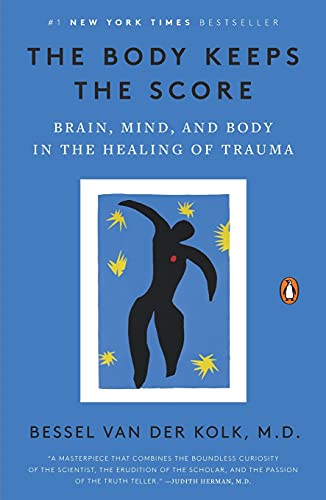
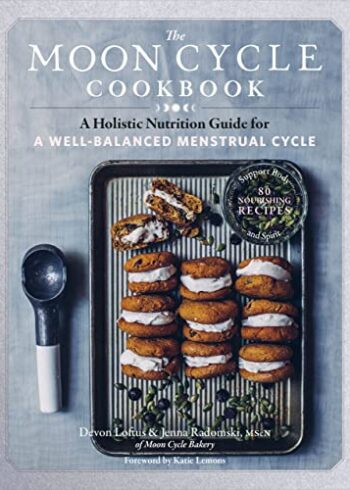



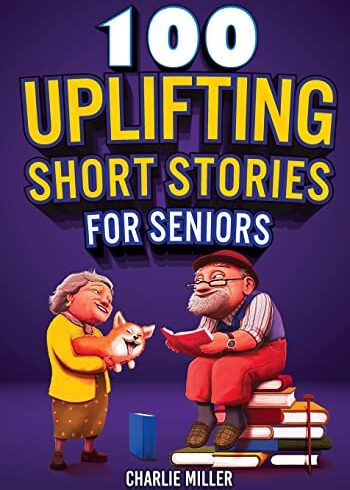








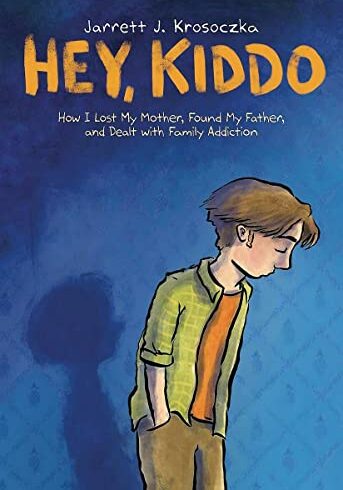
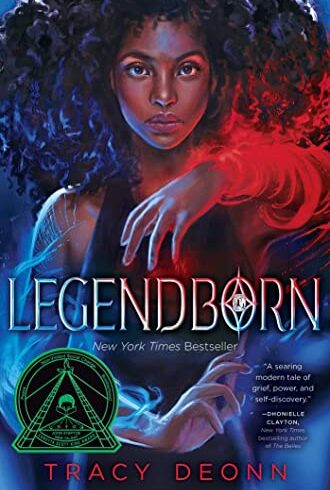



Tom Cloyd, MS MA –
Psychiatrist, professor, world-class researcher, and traumatologist Bessel van der Kolk MD requires no introduction to trauma psychotherapists. My enduring impressions of him over many years is one of relevance, cogency, frankness, and accessibility – served up with a subtle dash of impishness. He tends to be a bit disruptive – something of a provocateur – and everything of his I have ever read has taught me something, confirmed something important, or pushed my thinking in a new direction. When he has something to say, I want to hear it., However, I almost didn’t buy this book: I was put off by the title. Familiar with major reviews of PTSD psychotherapy outcomes research, I know that research support for body-oriented approaches to treating psychological trauma psychopathology is thin at best, and such treatment models simply do not have the research validation of either EMDR (Eye Movement Desensitization and Reprocessing) and PE (Prolonged Exposure), neither of which are especially body-focused., J. Interlandi’s excellent article anticipating publication of this book – “A Revolutionary Approach to Treating PTSD” (New York Times Magazine, 2014.05.22 – available online) – initially supported my fears that for some inexplicable reason van der Kolk was now promoting some treatment model for which we have little confirming research. “Psychomotor therapy is neither widely practiced nor supported by clinical studies,” Interlandi informs us. Provocateur he may be, but I’m strongly biased in favor of paying attention to therapies for which we do have solid empirical validation. Our clients do not deserve to be experimental subjects – maybe not even if they agree to this, as I’m not sure they can ever know enough to make a truly informed consent. Knowledge that PTSD and related disorders are usually highly curable, when using the right treatment protocols, sadly remains the possession of a minority of people, even in the professional psychotherapy world., Yet the account of van der Kolk’s therapy work in Interlandi’s article is gripping. Becoming completely absorbed in the account, I was convinced. (I’ve been here before, reading van der Kolk’s own accounts of his work.) And so the disruption begins! Deeper into the article, he has me. Van der Kolk’s critique of CBT (cognitive behavioral therapy – a general class of therapies) and PE (E. Foa’s exposure therapy model) is withering and correct: neither really work. “Trauma has nothing whatsoever to do with cognition…It has to do with your body being reset to interpret the world as a dangerous place….It’s not something you can talk yourself out of.” Interlandi reports that “That view places him on the fringes of the psychiatric mainstream.”, But he’s right, and I can’t stress this enough. Why? Because as a trauma treatment professional I’m well aware of what the trauma treatment outcomes research actually says. The best current summary of this research well may be chapter 2 of Ecker, et al.’s (2012) “Unlocking the emotional brain”. (Buy this book, too!) Ecker et al. brilliantly presents a synthetic summary that encompasses 11 existing therapy models which actually DO cure trauma psychopathology, if done right. In this context, what van der Kolk is doing makes perfect sense. Finally, it appears, the trauma psychotherapy field is moving toward a consensus which has strong credibility., Van der Kolk’s new book has many virtues. Parts One and Two (102 pp) provide a substantial review of the neuropsychology of trauma’s impact on a person. It’s fun, interesting, informative reading, for professional and layperson alike. Part Three (64 pp) surveys childhood development, attachment experience, and “the hidden epidemic of developmental trauma”. Van der Kolk has for years been a leading champion of the idea that there is a type of PTSD which substantially differs from all the rest. It develops in response to chronic child abuse and/or neglect. I completely share his belief that the diagnosis of Developmental Trauma Disorder (sometimes called C-PTSD, with “C” meaning “Complex”) is overdue for formal recognition. I find his review of the struggle to legitimize DTD as gripping and distressing as anything else in the book. It is anguishing to know that a major problem exists, AND that the psychiatric establishment simply refuses to acknowledge it. DTD/C-PTSD is no fantasy. We see and treat these people, as children and adults. They exist, and they are nothing like “ordinary” PTSD treatment clients., Part Four (29 pp) focuses on memory. I’ve long thought that much writing on treating psychological trauma seems to miss the point: trauma memory is what causes the problem. Deal with that and the symptoms vanish. Why is this so hard to understand? Yet, it is not a common understanding at all. Explaining how trauma memory works is invariably enlightening to my clients. And experiencing what happens when we change the nature of trauma memory is revelatory to someone who’s lived with it for years, if not decades. As he does throughout the book, van der Kolk offers fine stories about clients who have experienced exactly what I’ve seen happen in my clients, making excellent use of what cognitive research tells us: people understand things best through narratives. Offer a good narrative and you convince., Psychological trauma therapy is complex, but we are now well prepared to launch into the book’s core content – Part Five (154 pp), “Paths to Recovery”. He gets right to it: we cannot undo the trauma, but we CAN undo its effect on us, and so get our “self” back. Ch. 13 reviews existing therapies. His approach is to repair “Descartes’ Error” (see Damásio’s 1994 book of that title) by viewing mind and body as a single coherent functional unit. His topical coverage is complete and his critique of current therapies acute – not to be missed., He then writes of the importance of language (Ch. 14). We construct our narrative mainly in words, and the words we choose are critical. But language is not enough (this anticipates his next two chapters). Our senses encompass a larger world, and it’s center is our body, where all our sensory receptors are located. Then he introduces the treatment model he’s long advocated: EMDR (Eye Movement Desensitization and Reprocessing). I’m trained in EMDR, and in fact van der Kolk and I had the same instructor for our advanced training: Gerald Puk PhD. Van der Kolk tells an amusing and self-deprecating story about his advanced training experience, in which Puk was able to provide a strong corrective to his approach to clients. This is typical van der Kolk – he’s a truth-teller, even when it may put him in a poor light! And,after all, at this point he has nothing to prove to anyone., Finding an EMDR therapist is not hard (see his “Resources” section). Nor is it hard to find a yoga instructor, and yoga is what he advises for helping a trauma victim get back into their body. Yoga is a wise choice, because it is available, already widely known, and adaptable to a wide range of individuals and capabilities., There is much more in Part Five, and the focus is on self-empowerment. “Victim no more!” as they say. Most trauma therapists have a keen interest in seeing their clients leave therapy charged up and ready to fully embrace their life – that certainly is my own emphasis. Van der Kolk’s thoughts on self-empowerment for those in recovery from psychological trauma will be invaluable to any trauma psychotherapy client., For psychotherapy professionals, this book will be both delightful and confirming. For everyone else, it will be a readable, gripping, highly educational tour of topics all of which are critical to a successful transition back from the impact of psychological trauma. That he gives prominent though not dominating emphasis to developmental trauma disorders is entirely appropriate. Our society has yet to grasp that child abuse and neglect is a more often chronic than not, and that its impact is largely ignored and poorly treated, if at all. This does not have to be. Get educated (this book will do that), then commit to being an advocate for children as well as for adults impacted by trauma. They all deserve the chance to be healed, and we can now do that. Van der Kolk shows us how., The physical book: Jacket design is pleasant and interesting. Binding is less so: color of spine wrapping is semi-florescent, and of paper, not cloth. The book feels substantial and pleasant to hold and look at., Organization -, * 6 pp: prefatory praise by peers and related luminaries (interesting comments from some important people in the field);, * 2 pp: Table of Contents;, * 356 pp: actual text;, * 4 pp: Appendix: Consensus proposed criteria for developmental trauma disorder, * 3 pp: Resources, * 4 pp: Further reading, * 51 pp: Notes, * 21 pp: Index
monsterpixel –
Of all the non-fiction books I’ve read, this is by far the best one ever. I grew up in a tough way. Lots went wrong. My brother and I believed we were unwanted and we had plenty of evidence to back up our sentiment. We suffered shared abuse and individual abuses of every kind imaginable. When I became an adult, I subscribe to the concepts of people like Rush Limbaugh and drove around listening to his radio show proclaiming that there is no such thing as post-traumatic stress disorder. I believed I could gut it out, that the past was the past and that only weak people needed to talk through their problems. I believed only losers behaved badly as adults due to anything in their childhood or past and that claiming you were affected by any past problem was a crutch to allow you to embrace failure. Frankly, for a time, that approach worked for me. I got married, had some great children (still have them thankfully), built a company. But it didn’t take too long until it all came crashing down. And, when it did, I spent nearly 1.5 decades down. The anxiety that was always in my throat and chest was, to put it mildly, a distraction. It’s very hard to be kind to people, to focus on your work, to love others when all your power is spent trying to pretend you don’t feel like s***. When you can’t sleep because your heart is beating so forcefully that the entire bed is vibrating – at least it feels that way – you not only lose the joy of sleep, but you feel hopeless and miserable and even more so when you’re not able to understand why you feel this way. When you see everything you have go away and can only occasionally find the strength to take care of yourself and your business and need others in your life to carry you from time to time (much to your embarrassment) and yet you think you’re smart and capable and have no understanding of why you are where you are, life becomes a slog. You trudge through it wishing you were dead or that something would kill you even if, like me, you’d never kill yourself. Literally, when I was a believer, I went to bed every night and my prayers went something like this, “Dear Jesus, please have a bus run over me. I will never kill myself but I’m miserable. Please let me die so my family won’t hate me for killing myself but so that I can stop hating the sun coming up. In Jesus name, Amen.” If you’re like I was (and it’s hard to tell you how I was and hold the tears down even now), this book will help you change all that. It will describe in detail what you’re going through and it captures so many of those subtleties as to make it absolutely amazing. For the first time, I don’t have depression (and I don’t take pills). I don’t have anxiety (it still bubbles up on occasion but using mindfulness, it goes nearly as fast as it comes). My life is pointed in the right direction, my business future is hopeful, my love-life is stabilizing, I know I’ll no longer lose friends. I’m finally on track to getting what I want in every area of my life from women to money to friends and deep connections with my family. While I can’t attribute every part of my success to this book alone as it takes many things to get where you want to go (mostly you), I can absolutely attest to the power of this book. If you’ve suffered any sort of major and/or persistent trauma in your life, please buy (and read) this book. You will one day thank yourself for doing so.
Julie Mayer –
If you are dealing with trauma, PTSD, depression, anxiety etc…. then this book is very educational and I highly recommend it! This book has helped me understand so many things that I deal with every day that it’s healing to know that you’re not alone and that there is a way to heal step by step, not easy, but just the knowing of what can be done by yourself and with a great support system, your life has a chance to be life changing and you don’t have to feel like your stuck anymore! I guarantee you will find healing tools in this read which is worth the time to do for yourself. I dislike reading, but I was referred this book by my psychologist, and I couldn’t put the book down. The first 4 chapters I felt like it touched my life in a way that I believe that it is helping me find myself and understand why I feel the way that I do. Great Book!!!!!